Browse this gallery and see some of the most spectacular images of galaxies, stars and planets captured by cameras installed on spacecraft and ground telescopes this month.

This image of Jupiter’s iconic Great Red Spot and surrounding turbulent zones was captured by NASA’s Juno spacecraft.

A picture of Guam Island snapped from aboard the International Space Station.
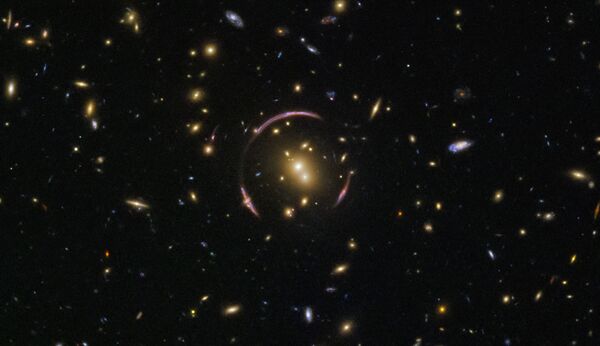
This image is packed full of galaxies! A keen eye can spot exquisite ellipticals and spectacular spirals, seen at various orientations: The vast majority of these specks are galaxies, but to spot a foreground star from our own galaxy, you should look for a point of light with tell-tale diffraction spikes. The most alluring subject sits at the center of the frame.

NASA's Mars Reconnaissance Orbiter shows bright ripples lining the topography in this region. Dark dunes and sand streaks (composed of basaltic sand) have moved and filled lower areas, pushed by more recent winds from the top towards the bottom of this image.

This new picture created from images from telescopes on the ground and in space tells the story of the hunt for an elusive missing object hidden amid a complex tangle of gaseous filaments in one of our neighboring galaxies, the Small Magellanic Cloud. The image comes from the NASA/ESA Hubble Space Telescope and reveals wisps of gas forming supernova remnant 1E 0102.2-7219 in green. The red ring with a dark center is from the MUSE instrument on ESO’s Very Large Telescope and the blue and purple images are from the NASA Chandra X-Ray Observatory. The blue spot at the center of the red ring is an isolated neutron star with a weak magnetic field, the first identified outside the Milky Way.
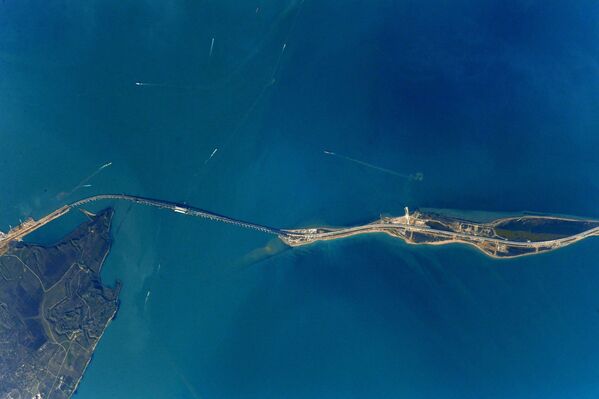
A photo of the Crimean Bridge, also known as the Kerch Strait Bridge, snapped from orbit.
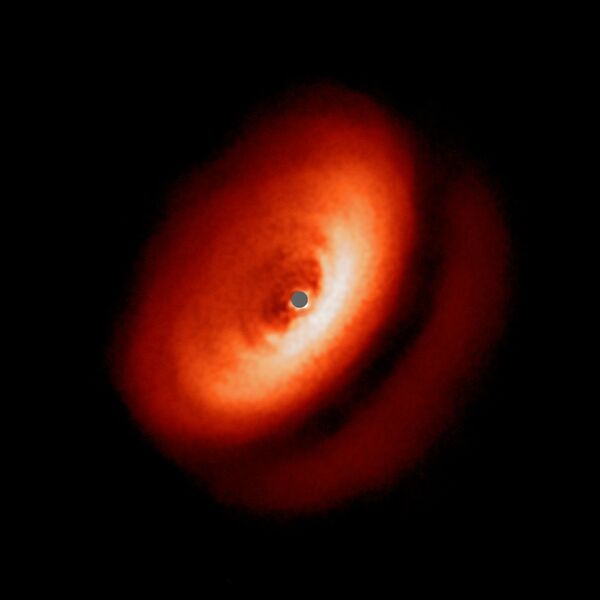
This spectacular image from the SPHERE instrument on ESO's Very Large Telescope shows the dusty disc around the young star IM Lupi in finer detail than ever before.
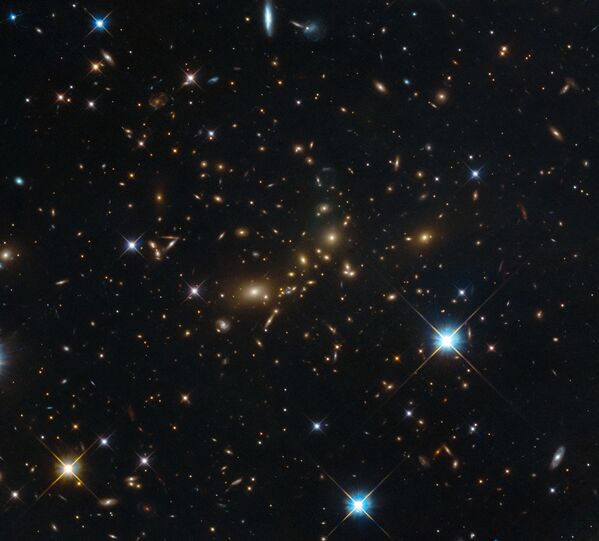
This image was taken by Hubble's Advanced Camera for Surveys and Wide Field Camera 3 as part of an observing program called RELICS (Reionization Lensing Cluster Survey). RELICS imaged 41 massive galaxy clusters with the aim of finding the brightest distant galaxies for the forthcoming James Webb Space Telescope to study.
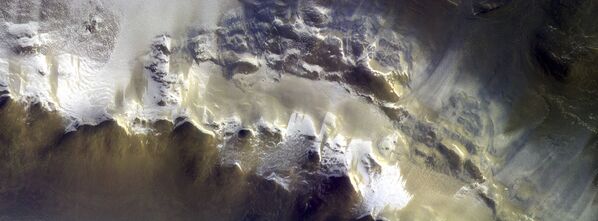
An image from the rim of the Korolev crater (165.9 E, 73.3 N) at 5.08 m/px with a ground-track velocity of 2.90 km/s. The solar incidence angle was 76.6 deg at a local solar time of 07:14:11.
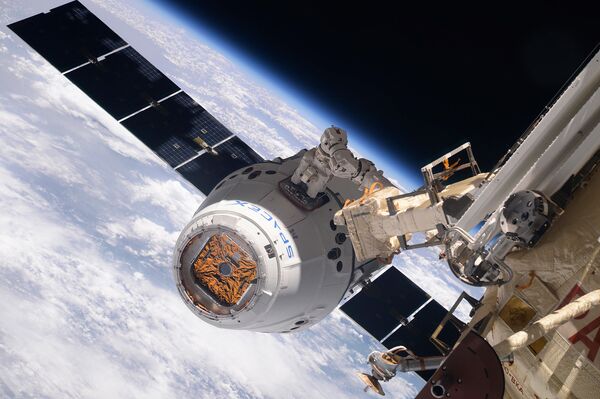
A SpaceX Dragon cargo spacecraft docks with the International Space Station.

To celebrate its 28th anniversary in space the NASA/ESA Hubble Space Telescope took this amazing and colourful image of the Lagoon Nebula. The whole nebula, about 4,000 light-years away, is an incredible 55 light-years wide and 20 light-years tall. This image shows only a small part of this turbulent star-formation region, about four light-years across. This stunning nebula was first catalogued in 1654 by the Italian astronomer Giovanni Battista Hodierna, who sought to record nebulous objects in the night sky so they would not be mistaken for comets. Since Hodierna’s observations, the Lagoon Nebula has been photographed and analysed by many telescopes and astronomers all over the world. The observations were taken by Hubble’s Wide Field Camera 3 between February 12 and February 18, 2018.
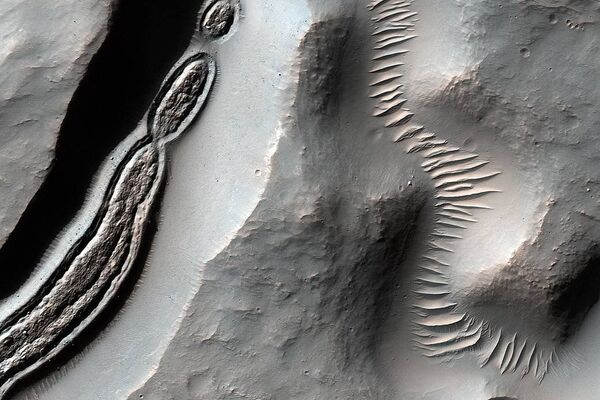
This image from NASA's Mars Reconnaissance Orbiter is a close-up of a trough, along with channels draining into the depression. Some HiRISE images show strange-looking formations. Sometimes it helps to look at Context Camera images to understand the circumstances of a scene - like this cutout from CTX 033783_1509 - which shows an impact crater with a central peak and a collapse depression with concentric troughs just north of that peak.

Auroras are one of the many Earthly phenomena the crew of the space station observe from their perch high above the planet. The dancing lights of auroras provide spectacular views, but also capture the imagination of scientists who study incoming energy and particles from our sun. Auroras are one effect of such energetic particles, which can speed out from the sun both in a steady stream called solar wind or from giant eruptions known as coronal mass ejections or CMEs. After a trip toward Earth that can last three days, the solar particles and magnetic fields cause the release of particles already trapped near Earth, which in turn trigger reactions in the upper atmosphere in which oxygen and nitrogen molecules release photons of light. The result: the Northern and Southern lights.
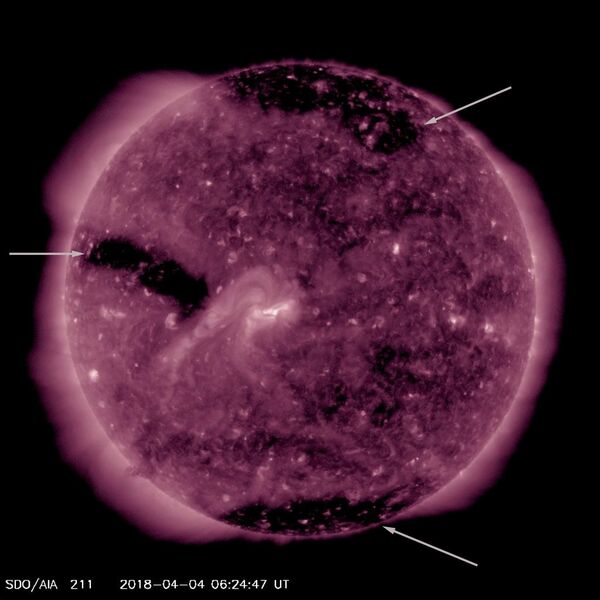
Oddly enough, an elongated coronal hole (the darker area near the center) seems to shape itself into a single, recognizable question mark over the period of one day (Dec. 21-22, 2017). Coronal holes are areas of open magnetic fields that appear darker in extreme ultraviolet light, as is seen here. These holes are the source of streaming plasma that we call solar wind. While this exercise is akin to seeing shapes in clouds, it is fun to consider what the sun might be asking.
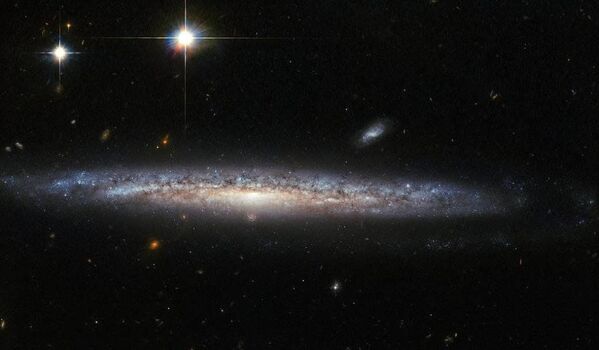
This image, captured by the Advanced Camera for Surveys (ACS) on the NASA/ESA Hubble Space Telescope, shows the spiral galaxy NGC 5714, about 130 million light-years away in the constellation of Boötes (the Herdsman). NGC 5714 is classified as an Sc spiral galaxy, but its spiral arms — the dominating feature of spiral galaxies — are almost impossible to see, as NGC 5714 presents itself at an almost perfectly edge-on angle.

